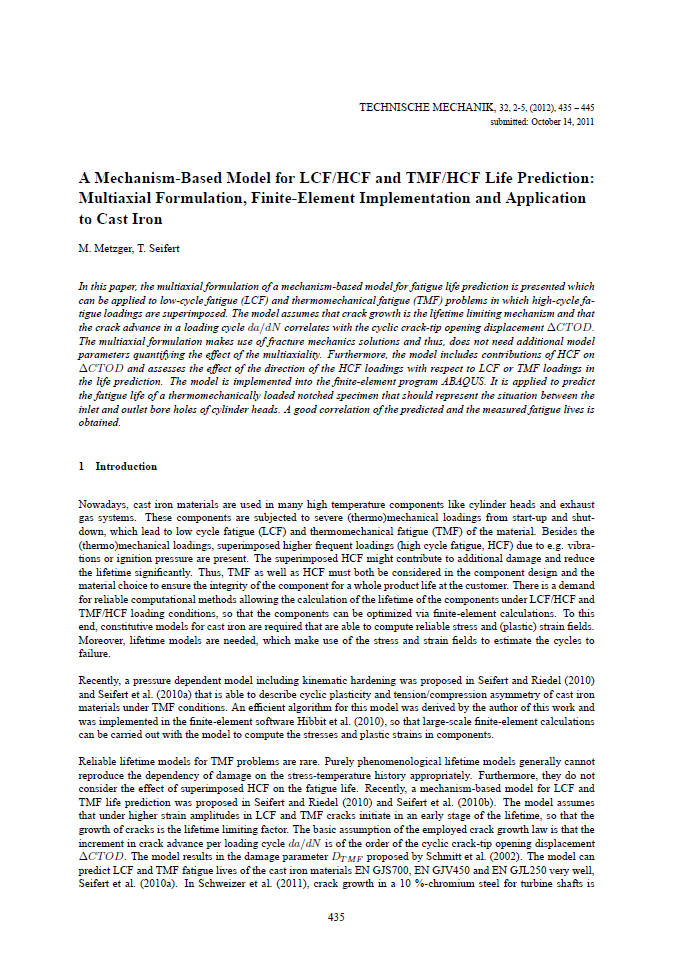A Mechanism-Based Model for LCF/HCF and TMF/HCF Life Prediction: Multiaxial Formulation, Finite-Element Implementation and Application to Cast Iron
Abstract
In this paper, the multiaxial formulation of a mechanism-based model for fatigue life prediction is presented which can be applied to low-cycle fatigue (LCF) and thermomechanical fatigue (TMF) problems in which high-cycle fatigue loadings are superimposed. The model assumes that crack growth is the lifetime limiting mechanism and that the crack advance in a loading cycle da/dN correlates with the cyclic crack-tip opening displacement ΔCTOD. The multiaxial formulation makes use of fracture mechanics solutions and thus, does not need additional model parameters quantifying the effect of the multiaxiality. Furthermore, the model includes contributions of HCF on ΔCTOD and assesses the effect of the direction of the HCF loadings with respect to LCF or TMF loadings in the life prediction. The model is implemented into the finite-element program ABAQUS. It is applied to predict the fatigue life of a thermomechanically loaded notched specimen that should represent the situation between the inlet and outlet bore holes of cylinder heads. A good correlation of the predicted and the measured fatigue lives is obtained.





